The 2021 NHL Entry Draft has come and gone. All the work scouts have compiled has come to pass over the course of a single weekend, and now the focus has shifted towards the uber-talented crop of 2022 Draft Eligibles. But, we never finished our series here at McKeen’s, where we were analyzing the different player archetypes that heard their name selected over the July 23rd weekend. This series has analyzed four of the most vital attributes - intelligence, goal scoring, skill, skating - acknowledging five of the highest graded players by McKeens in each trait. Now, the fifth and last, physicality will receive the same treatment.
Physicality is synonymous with hockey.
Older fans reminisce of the glory days, the times where hockey players were the athletes known for punching players for a variety of reasons and the referees stood there and let them. The game was filled with bruising blows and crushing hits, giving the sport, and it’s players, a reputation that uniquely stands out - these are the toughest athletes there are, playing the toughest game you can play. Ask the majority of hockey fans what they think are the unique opportunities physicality provides in the game of hockey and the answers will mostly consist of big open ice hits, fights, successfully overpowering foes while carrying the puck. Open up any list ranking the most effective physical players from any era and you will see a similar sentiment as it is filled with those who threw the biggest hits, those who grinded the best along the boards, those who overwhelmed defenders by bulldozing right through them, etc.
Many of those same older fans critique the modern game, saying that the players have become many variations of the word “soft” as they demean current players for not solving all of their problems with near-illegal open-ice hits and raw brute force. Before, players would welcome all types of contact as they attempt to drive play up the ice. The focus was never on avoiding contact, but powering through it. Those who wanted to play a style of hockey that prioritized skill and speed found themselves limited by the constraints of their era. Only the best of the best could manage to play that way successfully, and even then, the majority of the 20th century’s most esteemed players were still mammoths on the ice themselves.
Sports naturally evolve over time. The science behind player development only improves, resulting in more efficient training for youth players that can only start to be seen ten years after the improvements begin. The all time greats pioneer changes as every kid playing wants to be just like them. Slowly, but surely, the game will change to fit whatever is driving the most practical results at the highest level there is.
While overwhelming physicality was once a staple of the NHL, and those who could maul their way through the competition were often among the most respected players in the league, the game has evolved to an era where skill, speed and intelligence are the requirements for continued success. What good is hitting a player if you are not able to catch them? What are the benefits to overcommitting your weight in an attempt to push a player off the puck if the carrier has the means to bait you in and fly right by you, attacking the space you left behind? What value does physicality provide in today’s game?
Open space with minimal defensive pressure is essential for driving consistent scoring chances in the offensive zone. Efficient offences today are built with the purpose of spreading the defence thin. As a result, each individual member of the defence is now responsible for controlling more open ice, and ensuring that whatever space the offence can find poses minimal danger. The individual talent of each NHL player nowadays means that even a brief moment of dangerous space can be the only requirement to having your defensive structure broken down. All of this is to say that the assignment of modern day defenders is not to guard individual players, but instead to guard the dangerous spaces they currently have in their control.
This shift from player-to-player defence to zone defence is the reason why physicality is not as pronounced as it used to be. Before, attackers challenged defenders and initiated contact with the purpose of forcing the defence out of the space they wanted. Now, the offence is attempting to move you out of the space they desire before contact can be established, by either creating it for themselves (manipulating the defence to move in a particular way) or finding it (identifying open space that the defence is not currently covering). As such, defenders are now tasked with protecting the areas where medium and high danger chances are taken. It is not possible for any five man formation to cover every bit of dangerous ice, meaning they must work together and move as a unit to prevent chances. This means applying pressure, identifying efficient pursuit angles, purposeful movement that considers the position of the other nine skaters, and clever stickwork to constantly shut down opportunities to advance play. An endless motor never hurts either. With mobility and space manipulation being two of the main pillars of the modern day NHL, the value provided by overwhelming physicality has fallen by the wayside. The natural evolution of hockey means quality defence has gone from out-powering the opposition to out-smarting them.
In part three, I mentioned that the level of flashiness displayed by players with otherworldly levels of skill makes it difficult to measure who applies their skill in practical ways. I believe the same sentiment holds true for physicality. The players often identified as the top physical beings in the league may throw the biggest hits or maul smaller players when the opportunity provides itself, but those measures are not worth what they used to be. Considering this is a series about the practical usage of these skills, and identifying players who practically apply these skills to benefit both the micro and macro play of the team, it should now come to light why this final installment has been trickier to write than its predecessors - the proper application of physicality in the modern NHL simply means less of it. I cannot write about the countless players who heard their name called due to their size/physicality combination when my philosophy tells me that their style is impractical and inefficient. How physicality is perceived and evaluated by large segments of the hockey community is a direct contradiction to what I personally value.
This is not to say physicality does not have its place in hockey, it certainly does. There will never be a point in hockey where physical contact is not important. As long as boards exist to prevent the puck from going out of play, there will always be a practical element to how physicality is used. Compared to the middle of the ice, there is less space along the boards for players to work with, meaning the likelihood of a physical encounter will always exist. Spacing the ice fully around the OZ means a lot of plays are made around retrieving pucks from the perimeter and putting them in play in more dangerous areas, and this will always come with the threat of potential contact. In a lot of cases, contact between an attacker and a defender along the boards is an inevitability.
Not only that, there still exists a subset of players that have molded their strengths around the players of old - their game revolves around taking space from the defence through initiating contact and pushing them out of the way. They struggle to find success without pairing this with another tool, whether it be skating, skill or intelligence, but those who fuse the two are able to thrive in the modern era regardless of where they are on the ice.
Then there is the matter of the playoffs, where apparently the rulebook gets thrown in the trash and the hockey style of old is resurrected once again. In the regular season, a lot of the league’s more physical players have to toe the line between the opportunities provided to them by mauling the opposition, and the opportunities provided to the other team when they are sitting in the shame cube for two minutes. I feel this is an important distinction to bring up, because a lot of what I have said in terms of being practical with contact goes out the window when you can just slam people with zero regards for the rules. Both defenders and attackers can cheat their positioning a bit more, knowing that they can cover mistakes that give up the space they are supposed to be protecting by merely breaking the rulebook and applying physicality in ways that are “technically” illegal. Both cup finalists, the Montreal Canadiens and the Tampa Bay Lightning, may have benefitted from the rulebook leniency quite a bit on their way during their playoff journeys; however, when it came down to it, Tampa Bay’s modern offence consistently manipulated the overly-physical Habs into giving up dangerous space. As a result, the Bolts found themselves ending the series in five games.
When analyzing the most practical physical players in the 2021 NHL Entry Draft, I am looking for those who understand first and foremost how to properly apply physicality in the modern day that will work in both the stricter regular season, as well as the more lenient playoffs. The focus is not on players with the best physical attributes, but more so on those who possess the traits I value highly when it comes to the practical application of physicality - initiating contact in ways to create space without losing possession, understanding the value of leverage and cutting off recovery angles, having an endless motor that does not give up on plays, intelligent application of pressure reinforced with good pursuit angles and stick-work, good habits retrieving the puck around the boards, etc. The write ups for each player is shorter than the previous installments, as there simply is not as much to cover with this topic relative to the previous four.
So without further ado, here are five of the most physical players in the 2021 NHL Draft.
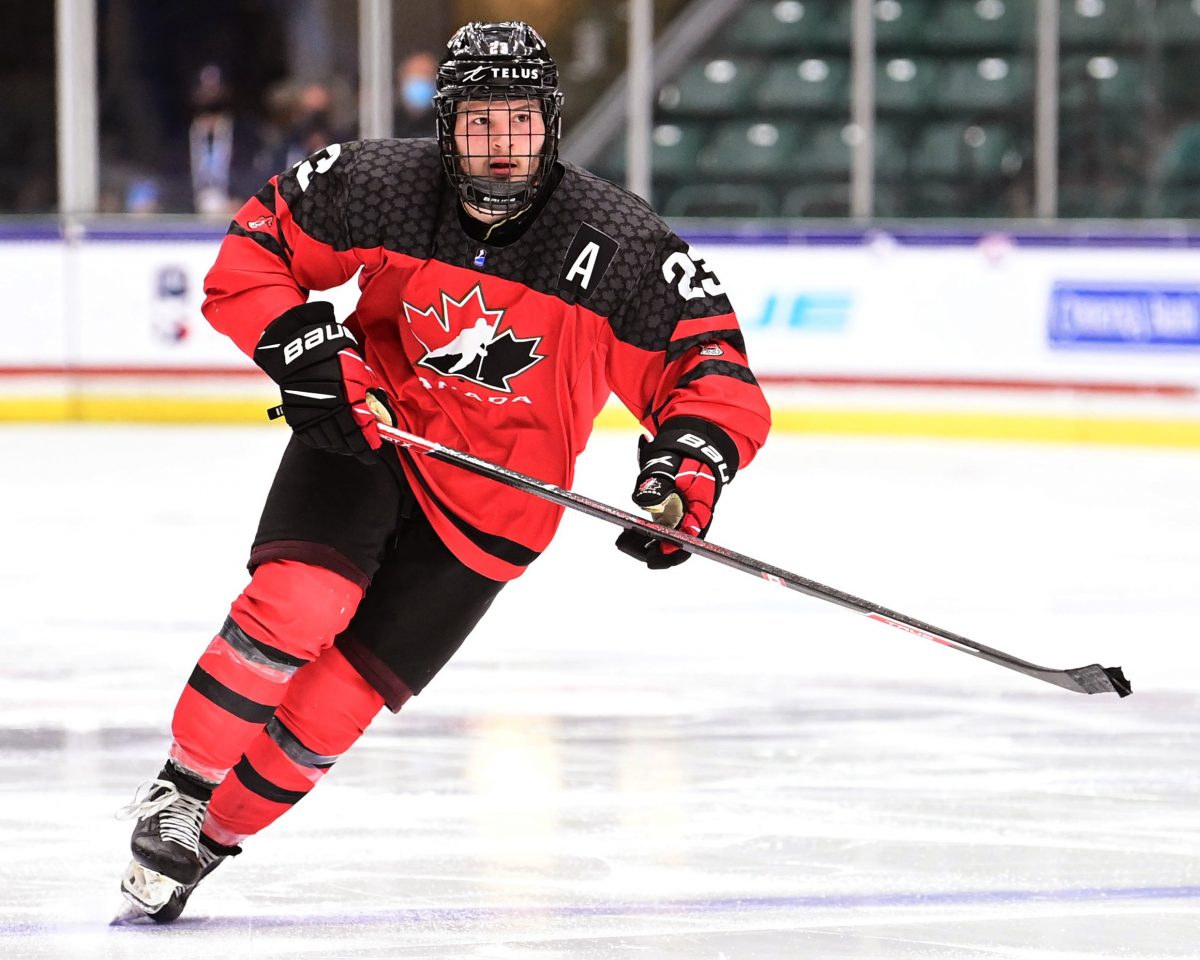
Mason McTavish
McTavish is everything that you want in a physical player these days. His endless motor is the beating heart that instills life into his game. He is a nuisance in all three zones, constantly active away from the puck with feet that never stop to rest for even a moment. I am willing to bet it is this willingness to leave it all out there on a shift-by-shift basis that procured his selection at third overall.
What makes his hustle so desirable is how he uses it in unison with an advanced understanding of how to control contact. Despite his 6’2, 207lbs frame, McTavish does not just rush blindly into physical encounters with the hopes of overpowering his foes. Instead, he selects ideal routes that provide him the chance to initiate contact with a high degree of leverage. Pure strength may be enough to overcome McTavish now, but there is a real understanding of how forces are applied and work against each other here. With some additional strength added, McTavish will have the tools required to constantly initiate contact, whether it is along the perimeter or in open-ice, and push the defender out of the space he desires to enter.
This becomes even more projectable when you look deeper into the routes McTavish selects as he hustles around the ice. His routes provide ample opportunity to support teammates when McTavish is off-puck, while also giving him the means to cut off and get inside the recovery routes of defenders while maintaining a high degree of leverage.
In open space, McTavish backs down to no threats. He does not possess the high level dynamism required to manipulate and deceive defenders prior to engagement with his hands/feet, but he does have a noteworthy shot that demands defensive attention. It gives McTavish some indication as to where the defence will move when he threatens a shot, and that threat is occasionally all he needs to manipulate them in a predictable way, providing McTavish the information he needs to determine what route to take when driving to the net. This allows him to control contact and maintain possession.
McTavish’s abilities to combine his understanding of leverage, control of contact, and clever off-puck routes allow him to consistently pressure the opposition to great effect, regardless of what zone he is in. His application of physicality is the epitome of what I am looking for in a draft pick - using his physical abilities in practical ways without being overly reliant on the opportunities provided by contact.
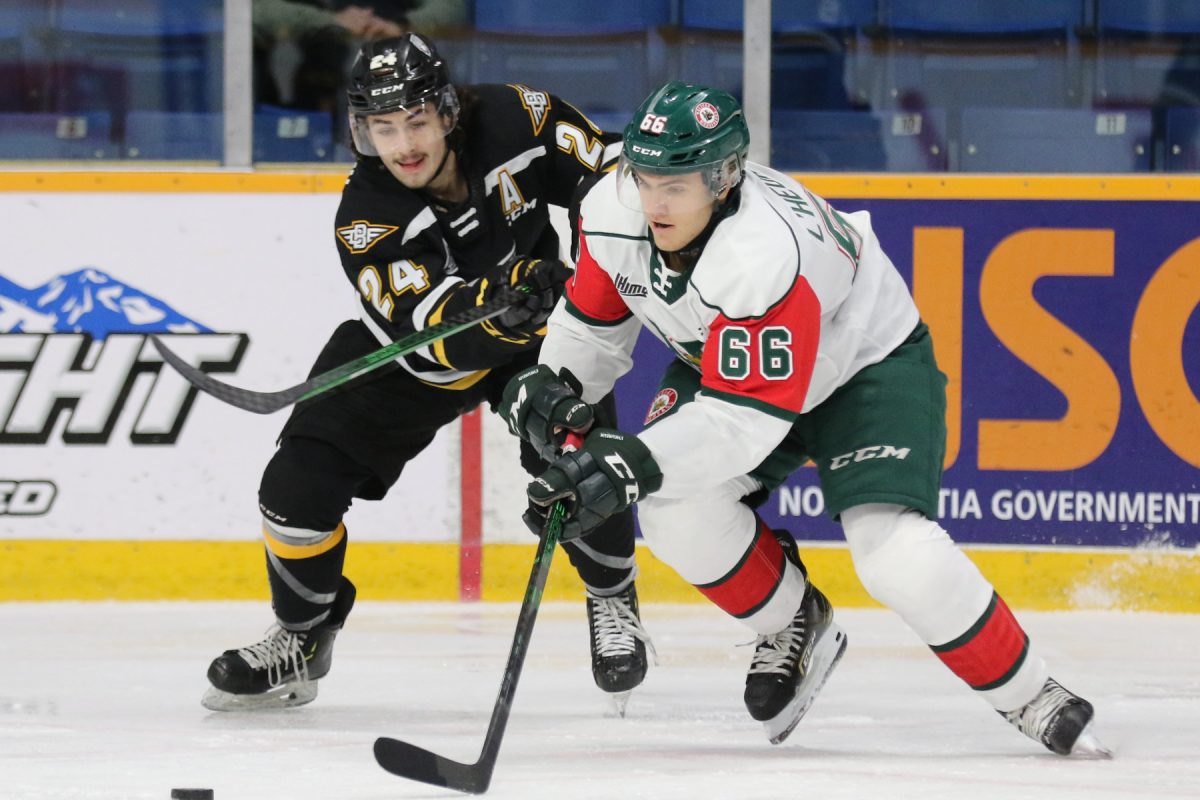
Zachary L’Heureux
One of the newest additions to the Nashville Predators pipeline is as mean and nasty as one can reasonably expect from a first round pick. There is no denying it, Zachary L’Heureux loves raising the stakes of every game by getting as chippy as he possibly can. Whether it be a fight, a hit, a board battle, or an attempt to bulldoze through the opposition, L’Heureux relishes every type of contact out there. He has no fear crossing the line, something I personally have an issue with but NHL team’s love to see.
L’Heureux is not the type of player you draft with the intention of putting them in a cycle based offence. This is a player who will make his money causing mayhem on the forecheck and, with some skating improvements, can contribute to a rush style of attack. He is an intelligent problem solver who thrives on making his plays through contact. Like McTavish, he has a thorough understanding of leverage and applies it when initiating contact and making plays along the boards.
Unfortunately, as mentioned before, he often crosses the line when doing so. He displays zero hesitation throwing in some extra, unnecessary contact that blatantly breaks the rules - his 47 PIM across 33 games will testify to that. Beyond that, L’Heureux found himself suspended four times across the QMJHL season for various reasons, none of which would make an NHL team particularly happy.
L’Heureux’s application of physicality in open ice is not as endearing as McTavish’s either. He lacks the skating ability to separate from defenders when driving the net, meaning his success will come from driving through foes without major skating improvement. NHL defenders are extremely tricky to overpower, especially if they already know that the puck carrier intends to bulldoze through them. Forcing them to give up their ground is a tall-ask. L’Heureux lacks the shot McTavish can use to demand defensive respect, meaning L’Heureux has to find other ways of manipulating defenders prior to initiating contact so that he is able to constantly gain leverage and push them out of the way.
At the end of the day, L’Heureux’s overly-physical game is likely enough to land him a spot on an NHL team within a few years. His rush offence has a foundation that projects well to the NHL, but will be reliant on a few other tools taking the next step forward as his propensity for contact will likely not be enough to make him a consistent rush attacker. L’Heureux’s forechecking game and ability to solve complex variables through contact are the foundation to which his game is created upon. Finding a way to dial back the penalties without sacrificing the physical attributes that make L’Heureux’s game so desirable is the difference maker between Nashville drafting a modernized power forward and a bottom six energy player who can contribute offensively once in a while.
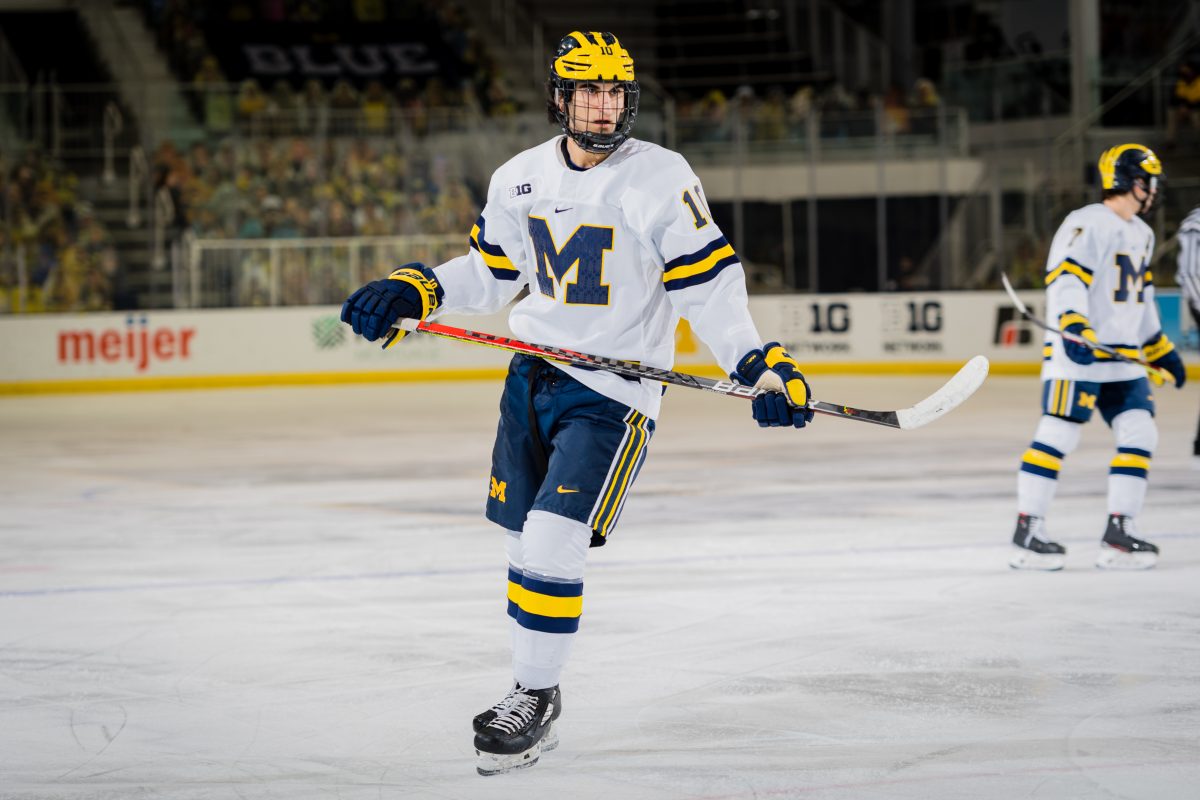
Matty Beniers
The first draft pick ever selected by the Seattle Kraken once again appears in this series as one of the best examples of a player applying his skills in a practical sense.
The details that make up Beniers’ intelligence and skill have already been revealed in past installments, but the manner in which Beniers can apply his physicality is near the top of the draft. He is undeniably one of the smallest players that can be mentioned in this conversation, measuring in at 5’10 and 172lbs. Yet, despite his more slender stature, Beniers is able to play through contact with the best of them. The secret to this is once again rooted in Beniers’ next-level intelligence. He rarely puts himself in situations where he is at risk of being overpowered by a bigger, stronger player. That is how he has managed to effectively play above his age group for years now.
When playing along the boards, Beniers applies a near-perfect understanding of leverage to generate forces beyond his strength level to control contact from bigger players. A low center of gravity means he is hard to knock off the puck, and his consistent insistence to protect the puck in his hip-pocket means Beniers is able to facilitate and make plays while undergoing forces being applied to him out of his control.
It is not just along the boards where Beniers’ shows this ability, as he routinely showcases it in open-ice as he transitions the puck from the defensive zone to the offensive zone. Beniers is as shifty a forward as you can find in transition, drawing players in as close as he can before getting around them into the space they left behind. This approach finds consistent success partly because of Beniers’ ability to combine his skill and skating to deceive pressure into committing their weight in any particular direction, but also because of how he maintains puck control and momentum despite whatever contact is placed upon him.
There are not many examples of Beniers’ bullying his way through players through raw power, but he does not need to. He shows the value provided by constant pressure and intelligent pursuit angles on a shift-by-shift basis. In the cases where Beniers must engage physically with his opponent, he achieves practical results by controlling how contact is initiated and escaping the pressure as soon as he can while maintaining possession.
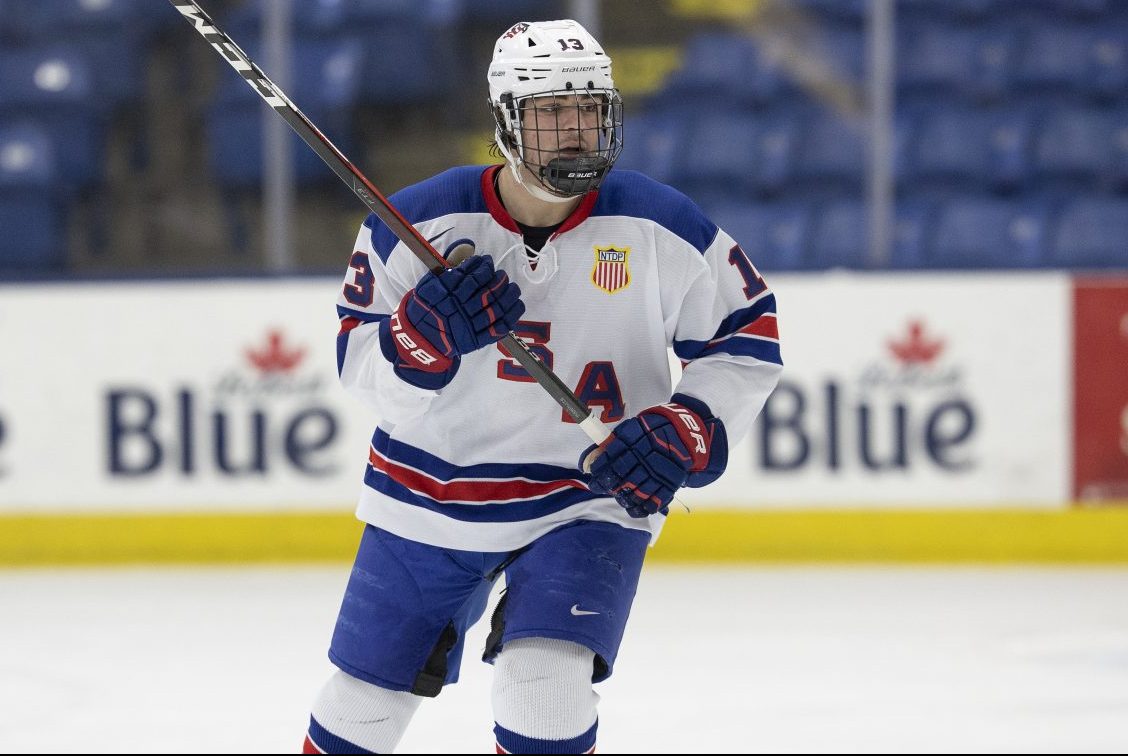
Tyler Boucher
Did anybody expect to hear Tyler Boucher’s name called by the Ottawa Senators at tenth overall? I certainly did not. It is not the pick I would have made either, but if Pierre Dorion’s goal is to construct a team identity around overwhelming physicality and endless motors, then the Tyler Boucher selection can start to make sense.
While Boucher’s physical approach to the game is damn-near reminiscent of the old days, he plays with just enough skill and purpose that you can see how he fits as a modern era power forward. It begins with the support routes that were mentioned before, as Boucher constantly found himself within a close enough proximity to assist them with whatever they needed. Need an easy outlet pass to escape pressure? Boucher is there for you. Need a linemate to help engage along the perimeters to secure possession? Boucher is already en route.
What is most intriguing with Boucher is that unlike L’Heureux, he does not enter these physical engagements with reckless abandon. Tyler displays patience, sometimes positioning himself as necessary to make a physical play but waiting for the most opportune time to initiate contact. Body positioning, leverage, and the right engagement angles are his bread and butter, and he applies them in projectable ways that serve the benefit of the team.
His skill, shot, skating abilities and the manner to which he applies them over the ice are roughly fringe NHL level. It is a given that at least one of these tools will need to take a considerable step forward if Boucher is to become an effective NHL player worthy of being selected tenth overall; however, there is a manner of safety built in with this selection solely on Boucher’s physical abilities as well as the practicality to which he applies them. There is a lot of projectability to both his perimeter and his support play, and any increase of skill and skating provide Boucher with the means to become a dangerous power forward in one-on-one encounters.
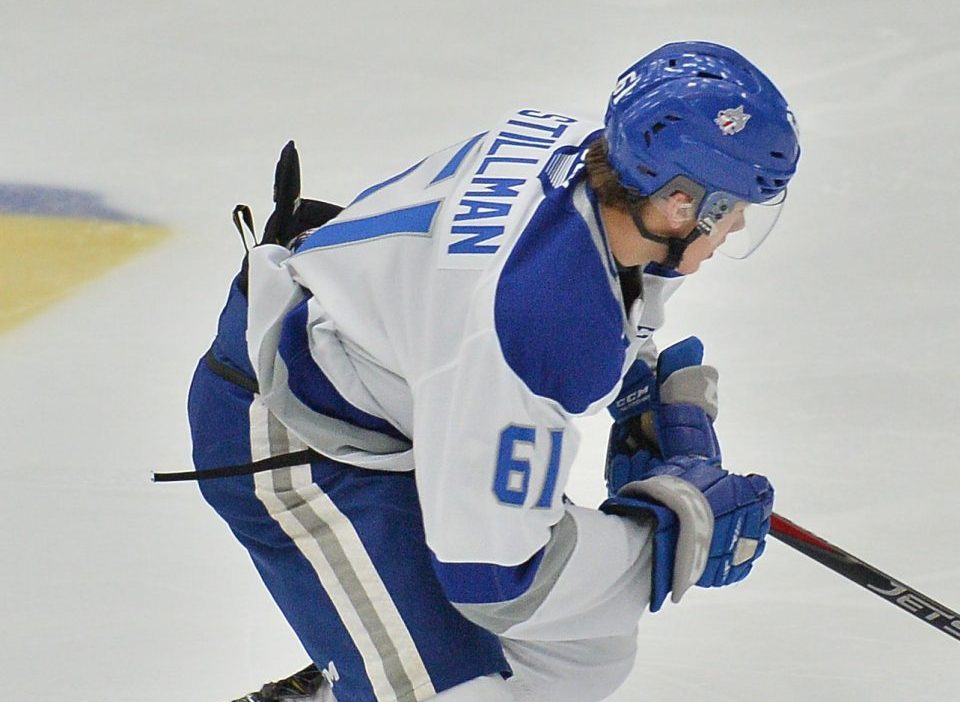
Chase Stillman
There is no player that received a higher physicality grade from their regional scout at McKeens than Chase Stillman. A large part of this is due to the fact that he wears his heart on his sleeve every single shift. His motor is infectious for linemates, and while his sample size is brief and highly limited, it showed in spades at the U18’s as a prominent forechecker.
As mentioned regularly throughout this piece, the ability to pressure the opposition carries a ton of importance in the current NHL. Stillman’s pressure is his most projectable trait, and it may be the single biggest reason why he heard his name called in the first round despite the minimal game footage we saw from him this year. Stillman’s ability to track loose pucks and secure possession for Canada at the U18’s was so advanced that I mistook him for McTavish on numerous occasions. There is no quit with him in any zone.
While Stillman’s pressure away from the puck is as projectable as anybody’s in this class, what really makes him stand out is his understanding of when to pressure the opposition and when to initiate contact with the opposition. He weaponizes his pressure and active stick as he attempts to shut play down while also staying aware of where his presence is most valuable. If the opposition manages to shift play elsewhere, Stillman does not hesitate to re-position himself accordingly and apply pressure from a practical pursuit angle. This relentless pressure forces quick decision making from the defence, and if they fail to move play away from Stillman then they are forced to engage with him physically.
Stillman does not control contact as well as the other names on this list. His endless commitment to pressure means some of his selected routes do not intersect with the opposition’s recovery routes, and as such he is not initiating contact from the inside with proper body positioning. At this level, it does not inhibit him from being able to make plays through contact, but it is always questionable trying to project someone’s means of playing through contact if they are unable to consistently initiate it with correct body positioning. This may just be a sampling issue, as we were unable to see Stillman play in an OHL role for an extended period of time. His role at the U18 might have been more focused on consistently applying pressure by any means necessary, even if it means initiating contact from outside angles when the time came.
Stillman’s hustle is the reason he was selected in the first, as well as the reasoning for him being placed on this list. It is likely to land him an energy role in an NHL team’s bottom six, and improving his habits during the lead-up to initiating contact may unlock his ability to create plays through contact. Some further development with other tools may open the doors to an even higher role in an NHL lineup.
Outro
That. Is. It.
We have now finished part five of my “Best Of” series, as we have now gone over all five of the core traits found in hockey players - intelligence, goal scoring, skill, skating and physicality. We have taken a deep dive into how players of each archetype find NHL success, how these traits can be applied in both practical and impractical ways, and the ways the players selected in this series will be able to leverage their strengths during their quest to find success at the NHL level.
This was the final deep dive into a player trait for the “Best Of” series; however, it is not the final piece to be written. The conclusion will be the long awaited “Sam’s Favourite’s” discussion, where I briefly go into each of the five archetypes we covered and mention some of my favourite players. While these players did not receive the grades from our regional scouts to merit a selection for these lists, I have a personal affinity for the way they apply their respective skills and believe they are worthy of acknowledgement. Until then, I thank you all for reading my debut series for McKeen’s and I hope that each reader was able to take something away from this.































